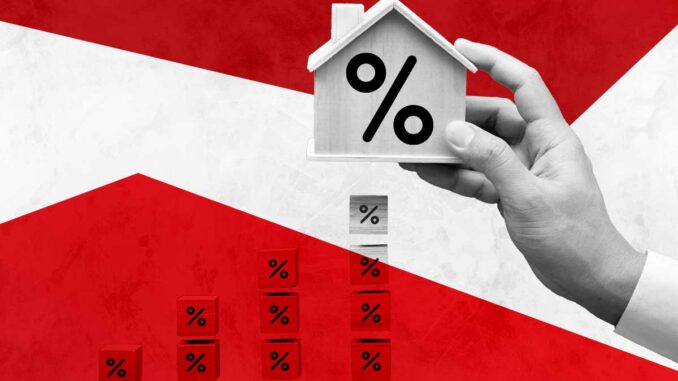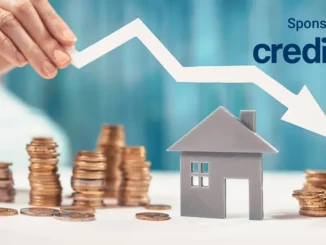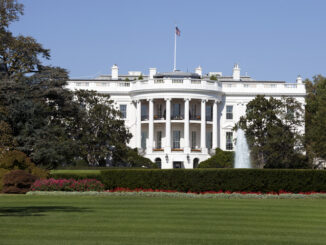
Economic data indicating that the U.S. economy has remained resilient despite the Federal Reserve‘s tightening monetary policy led to a substantial increase in mortgage rates last week. Does this mean mortgage rates are close to reaching the 7% level again?
“Mortgage rates have been rising after the jobs report was solid, retail sales beat expectations, and the homebuilder’s confidence is rising,” Logan Mohtashami, lead analyst for HousingWire, said. “We have an array of economic data that has been good.”
In January, inflation continued to climb well above the Fed’s target, at an annual rate of 6.4%. In addition, total nonfarm payroll employment rose 517,000 jobs from December, breaking the downward trend, and retail spending increased 3%, the largest monthly gain in nearly two years. Meanwhile, builder confidence in the market for newly built single-family homes rose seven points in February from January’s reading.
Positive economic indicators were enough for the 30-year fixed-rate mortgage to rise again to 6.32% as of Feb. 16, up 20 basis points compared to the previous week, according to the latest Freddie Mac survey. A year ago at this time, the same rates were at 3.92%.
Other indexes show mortgage rates that are even higher. At Mortgage Daily News, rates were at 6.75% as of mid-day on Thursday, up 13 basis points compared to the previous day. At HousingWire’s Rates Center, the Optimal Blue data showed rates at 6.48% on Wednesday, compared to 6.28% in the previous week.
“Mortgage rates moved up for the second consecutive week,” Sam Khater, Freddie Mac’s chief economist, said in a statement. “The economy is showing signs of resilience, mainly due to consumer spending, and rates are increasing. Overall housing costs are also increasing and therefore impacting inflation, which continues to persist.”
Where are mortgage rates heading to?
Economists believe that mortgage rates may rise to the 7% level soon amid the stronger-than-expected U.S. economic performance, adding more affordability challenges to the housing market. The last time rates were at 7% was in November 2022.
“Mortgage rates are going to move in the 6% – 7% range over the next few weeks,” George Ratiu, Realtor.com manager of economic research, said in a statement.
Ratiu added that the Fed signaled that it will continue to raise rates this year but at a less aggressive pace than in 2022. The expectation is for 25 basis point increments.
“The central bank is acknowledging that it sees its monetary actions having a tangible effect on inflation. The CPI data out this week seems to confirm the bank’s views,” Ratiu said.
Mohtashami estimates mortgage rates at 7.25% and the 10-year yield at 4.25%, the highest level in 2023, according to his forecasts.
However, according to Mohtashami, “the growth rate of inflation will look softer as the year moves on as the real rent inflation data starts to look more in line with current market data.”
Rising rates, however, tend to bring affordability challenges.
“For housing markets, the rebound in rates translates into higher mortgage payments from a year ago, but lower than the summer 2022 peak of the market, because prices have dropped 11% over the past seven months,” Ratiu said.
Ratiu estimates that the buyer of a median-priced home is looking at a $1,985 monthly payment at today’s rate, 42% higher than last year, yet 6% lower than it would have been in June 2022.
This means a challenging market for mortgage companies.
“Economic uncertainty, affordability challenges, and inventory constraints are keeping some would-be buyers on the sidelines,” Bob Broeksmit, Mortgage Bankers Association‘s (MBA) president and CEO, said in a statement. “Applications to refinance and buy a home declined on both a weekly and annual basis, as an uptick in mortgage rates curbed activity.”



